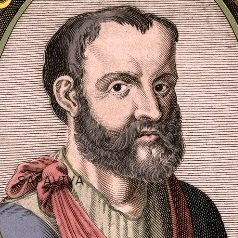Contemporary medical scientists and practitioners have a deep understanding of human structure and function – from the organs and tissues under the skin to the multitude of cells of which they are built. We’ve delved deeper into the structures and biochemical processes within those cells, as far down as our genes and their makeup. Sure, there are exciting frontiers yet to explore, and what we now know will need some fine-tuning. But that work will go forward from a solid base of knowledge.
For this we can thank the past five centuries of steady – and often stunning – progress. But over the thirteen centuries that preceded them, the understanding of the human body remained rigidly dependent on the teachings of one man – the towering Greek physician Galen (129-210 CE). A previous blog briefly reviewed Galen’s remarkable life and achievements. Galen’s writings in anatomy, as finally shown by Andreas Vesalius in the 16th century, were misguided and incomplete. But not even Vesalius could shake off Galen’s notions of how the body works, as fanciful and bizarre as they would seem today.
Galen’s Model
In broad outline, Galen’s system features the liver, heart, and brain. The liver receives digested food from the intestines and turns it into blood, which is carried by the veins to nourish the body. Venous blood does not mix with arterial blood with one major exception – some of the venous blood that reaches the right ventricle of the heart passes through minute pores in the wall between the right and left ventricles (the septum), where it is joined by “refined air,” or pneuma, which arrives from the lungs via the pulmonary vein. This blood-and-pneuma mixture creates “vital spirit,” a vivifying substance sent to the body via the arteries.
Arterial blood also reaches a special network of arteries at the base of the brain where it receives “animal spirit” to impart consciousness and voluntary motion. There you have it – we have life energy, we are nourished, we think, and we move. Any questions?
Of course, from our privileged seats in the 21st century, there are big problems with this scheme. To mention a few: the liver does not make blood in postnatal life; the pulmonary vein is a blood vessel, certainly not an airway; the arterial and venous circulations are not separate; there are no pores in the ventricular septum; there is no special arterial network at the base of human brains. And as for pneuma, vital spirit, and animal spirit, let’s just say they’ve never been identified.
Galen was just as much a philosopher as a physician; drawing on his own animal studies and notions from the likes of Hippocrates and Plato, he thought up a working model consistent with his conjectures on the nature of human life. And the fifty generations of physicians that followed Galen by and large swallowed it whole.
Wrong, But Still Awesome
Clearly, Galen got almost nothing right about human physiology. We can have a few laughs at his expense, but it’s important to remember that cultural prohibitions against human dissection limited Galen’s work to animals; he probably never did a human dissection. Remember too that his only investigative tools were his unaided senses. The structure and workings of tissues and organs at the cellular and biochemical levels were well beyond his reach. Still, Galen was a keen observer and a sophisticated experimenter.
It seems surprising that Galen’s speculations went unchallenged for century after century. Galen would have been just as surprised; he urged other physicians to make their own observations. So why the unwavering devotion to Galen? Ancient authority counted for a lot in times gone by. Galen was beyond famous; he was a god-like figure to physicians, and it was heresy to suggest any variation from his teachings. Vesalius could not find the pores in the ventricular septum, or the network of arteries at the base of the brain, but Galen’s influence was so powerful that it took him years to be willing to say they didn’t exist.
What could Galen have achieved if he wasn’t limited to studying pigs and apes? What if others had heeded his advice to do independent investigations? Medical science could have had a major jump-start. Brilliant and courageous physicians like Vesalius and Harvey finally came along who challenged Galen and took him down – with respect for his greatness. I’d like to think that Galen, even with his rock-star ego, would have been pleased.

